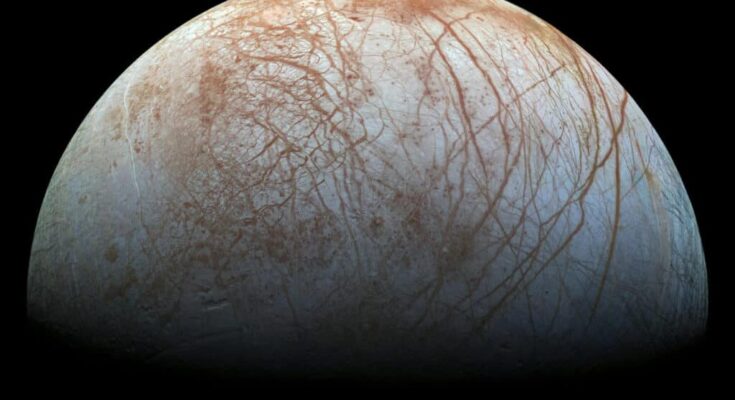
The devastating hurricane, Milton, will not stop NASA from sending its largest probe yet to Europa, the icy moon of Jupiter. The mission called Europa Clipper is now targeted to launch after October 14th. The launch site was battered by the brutal hurricane, but it will not stop NASA from sending one of its most important probes ever to Europa.
But why is this probe so important? Europa is one of the few realistic candidates that could actually hold life. This is because Jupiter’s moon is an icy world that scientists have speculated for a long time, could hold massive water seas under its icy surface, making it an exciting candidate for finding life outside Earth.
NASA sending a probe to Europa is a huge deal
Europa is one of the large moons of Jupiter that were first discovered by Galileo Galilei 414 years ago. As previously mentioned, what makes this large moon so exciting, is the possibility that there might be a deep salty massive ocean beneath its thick crust of ice.
The Europa Clipper mission has been in the making for decades at NASA, and it cost a mouth-watering total of $5 billion. Robert Pappalardo, a project scientist for the Europa Clipper mission, simply described the mission as a “huge deal.”
NASA is also working with SpaceX for this mission. The probe will be launched with SpaceX’s Falcon Heavy, and the launch window will span from Monday, October 14th to November 6th.
Finding alien life has been a NASA goal for decades
Alien life is probably the biggest mystery in the universe—at least for us humans—and, believe it or not, NASA has been working on discovering alien life for decades. The scientific community has opted to narrow down options to enticing and realistic targets, and Europa surely tops the list in the solar system.
NASA is fully focused on discovering the truth about Jupiter’s icy moon, Europa. The probe that is going to be used for this mission is the largest one the space agency has ever built. It weighs an astonishing thirteen thousand pounds and will deploy a solar array that is more than one hundred feet across, which is needed for a mission that will fly so far out from the sun.
The space agency has also made it clear that this is not a life-detection mission. The probe will instead focus on finding out whether or not Europa has the right environmental conditions for sustaining life and whether or not the moon is habitable.
If habitability is likely on this moon, then it is likely that the space agency and scientists across the world will lobby for a more ambitious mission to Europa.



